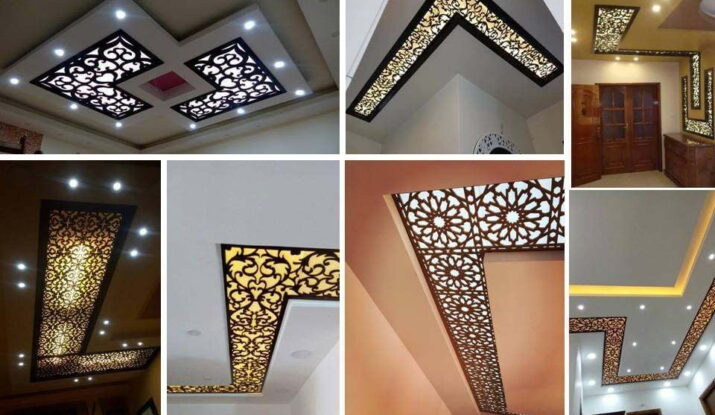Jali cutting is a traditional form of woodcarving that has been practiced in South Asia for centuries. This intricate technique involves creating a pattern of perforations, known as a jali, in wood or stone, to create an ornate and delicate design. Jali cutting has been used to adorn architectural structures, such as doors, windows, screens, and partitions, as well as furniture and decorative objects. In this article, we will explore the history, technique, design, and cultural significance of jali cutting.
History of Jali Cutting
The history of jali cutting can be traced back to ancient India, where it was used as a decorative element in palaces, temples, and tombs. The earliest examples of jali cutting can be found in the rock-cut architecture of the Mauryan Empire, which dates back to the 3rd century BCE. The intricate jali patterns were used to adorn the entrances, windows, and screens of Buddhist caves, such as the Ajanta and Ellora caves in Maharashtra.
The Mughal Empire, which ruled India from the 16th to the 19th century, also used jali cutting extensively in their architecture. The Mughals were known for their love of intricate decoration and used jali patterns to create the delicate screens and balconies of their palaces and tombs, such as the Taj Mahal in Agra. The Mughal jalis were also used to create the intricate facades of their mosques, such as the Jama Masjid in Delhi.
Jali Cutting Technique
Jali cutting is a labor-intensive technique that requires skill and precision. The traditional method of jali cutting involves using a small chisel and a hammer to carve out the design. The artisan would first draw the design on the wood or stone surface and then carefully chisel away the material to create the perforations. The depth of the perforations would vary depending on the desired effect, with shallow perforations creating a lacy effect and deeper perforations creating a more dramatic effect.
Modern jali cutting techniques involve the use of power tools, such as a laser cutter or CNC machine, to create the perforations. While these tools have made jali cutting more efficient, they have also led to a loss of the handcrafted quality and uniqueness that is characteristic of traditional jali cutting.
Design of Jali Cutting
Jali patterns are created by a repetition of geometric shapes, such as circles, squares, triangles, and stars. The patterns can be simple or complex, with some designs featuring interlocking shapes and others featuring intricate floral or calligraphic motifs. The designs are often inspired by nature, such as the leaves of a tree or the petals of a flower, as well as Islamic art and calligraphy.
Jali patterns can be used to create a variety of effects, such as providing privacy while still allowing light and air to flow through, creating a sense of depth and texture, and adding a decorative element to a space. Jali patterns can be used in a variety of architectural elements, such as doors, windows, screens, and partitions, as well as in furniture and decorative objects.
Cultural Significance of Jali Cutting
Jali cutting has a deep cultural significance in South Asia, particularly in India, Pakistan, and Afghanistan. Jali patterns are often associated with Islamic art and architecture, as they were used extensively in the construction of mosques and other Islamic buildings. Jali patterns are also associated with Hindu and Jain architecture, particularly in the use of perforated stone screens to create a sense of privacy and lightness in temple architecture.
Jali patterns are also used in traditional crafts, such as woodcarving and metalworking. Jali screens are a common element in traditional Indian homes, particularly in the northern regions, where they are used to create a sense of privacy while still allowing light and air to flow through. Jali screens are often used in the construction of verandas, balconies, and courtyards, creating a beautiful play of light and shadow.
Jali cutting has also played an important role in the development of regional styles of architecture and design. The jali patterns used in different regions of South Asia are often influenced by the local culture and traditions. For example, the jali patterns used in Rajasthan are heavily influenced by the Rajput and Mughal styles, while the jali patterns used in Gujarat and Maharashtra are heavily influenced by the Islamic and Jain styles.
In addition to its cultural significance, jali cutting has also played an important role in the economic development of the region. The traditional craft of jali cutting has provided employment opportunities for generations of artisans, who have passed down their skills and knowledge from one generation to the next. The demand for jali cutting has also created a market for the sale of raw materials, such as wood and stone, as well as tools and equipment used in the craft.
However, the traditional craft of jali cutting is facing several challenges in the modern era. The use of power tools has led to a decline in the quality of the handcrafted jalis, as well as a decline in the number of artisans who practice the craft. The lack of government support for traditional crafts and the rising cost of raw materials and equipment have also made it difficult for artisans to sustain their livelihoods.
To address these challenges, several initiatives have been undertaken to promote and preserve the traditional craft of jali cutting. These initiatives include training programs for young artisans, the development of design and marketing skills, and the establishment of craft clusters and cooperatives to provide support and infrastructure to artisans.
In conclusion, jali cutting is a traditional craft that has played an important role in the cultural and economic development of South Asia. Its intricate patterns and delicate designs have adorned the architecture and design of the region for centuries, and continue to inspire artists and designers today. As the craft faces challenges in the modern era, it is important to recognize and support the artisans who practice this beautiful and unique craft, and to preserve its cultural significance for future generations.

